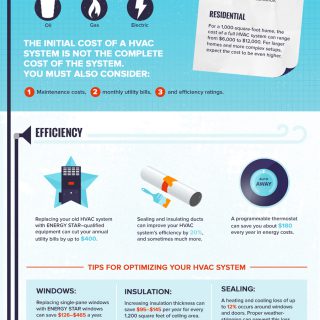The Future Of Home Heating - Just How Heat Pump Modern Technology Is Evolving
The Future Of Home Heating - Just How Heat Pump Modern Technology Is Evolving
Blog Article
Produced By-Marshall Byrne
Heat pumps will be a vital modern technology for decarbonising home heating. In a circumstance constant with governments' introduced energy and environment dedications, their international capacity doubles by 2030, while their share in home heating rises to one-quarter.
They work best in well-insulated homes and rely on electrical power, which can be provided from a renewable power grid. Technical advancements are making them more efficient, smarter and less expensive.
Gas Cells
Heatpump use a compressor, cooling agent, coils and followers to relocate the air and warm in homes and devices. They can be powered by solar energy or electricity from the grid. They have been getting popularity as a result of their affordable, peaceful operation and the ability to create electricity throughout peak power need.
Some business, like IdaTech and BG MicroGen, are working on fuel cells for home heating. These microgenerators can change a gas boiler and generate a few of a house's electric requirements with a link to the electricity grid for the rest.
Yet there are reasons to be cynical of using hydrogen for home heating, Rosenow claims. It would be pricey and inefficient contrasted to various other technologies, and it would contribute to carbon emissions.
Smart and Connected Technologies
Smart home modern technology permits homeowners to attach and regulate their devices from another location with the use of mobile phone apps. For example, smart thermostats can learn your home heating preferences and immediately adjust to enhance energy usage. Smart lights systems can be managed with voice commands and automatically shut off lights when you leave the room, decreasing power waste. And wise plugs can keep track of and handle your electric use, allowing you to determine and restrict energy-hungry appliances.
The tech-savvy house depicted in Carina's meeting is a great image of exactly how passengers reconfigure room home heating methods in the light of new clever home modern technologies. source for this article rely upon the devices' computerized attributes to perform day-to-day changes and concern them as a convenient methods of conducting their home heating practices. Thus, they see no reason to adapt their techniques even more in order to make it possible for adaptability in their home energy demand, and treatments targeting at doing so may deal with resistance from these homes.
Electrical energy
Considering that heating up homes represent 13% of US discharges, a switch to cleaner options might make a huge difference. But the modern technology encounters obstacles: It's costly and needs considerable home renovations. And it's not constantly suitable with renewable energy sources, such as solar and wind.
Until just recently, electrical heatpump were also costly to take on gas designs in most markets. However brand-new technologies in layout and materials are making them much more budget friendly. And much better cold climate efficiency is allowing them to function well even in subzero temperatures.
The next action in decarbonising home heating might be making use of heat networks, which draw warmth from a main source, such as a close-by river or sea inlet, and disperse it to a network of homes or structures. That would certainly lower carbon discharges and allow households to make the most of renewable energy, such as green electricity from a grid supplied by renewables. This option would be less pricey than changing to hydrogen, a nonrenewable fuel source that calls for brand-new facilities and would just minimize CO2 emissions by 5 percent if paired with improved home insulation.
Renewable Energy
As power prices drop, we're starting to see the same pattern in home heating that has driven electric vehicles into the mainstream-- but at an even quicker rate. The strong environment instance for impressive homes has actually been pressed further by new research study.
Renewables make up a considerable share of contemporary warm consumption, but have actually been offered limited policy interest globally compared to other end-use sectors-- and also much less attention than electrical energy has. In part, this mirrors a mix of customer inertia, divided motivations and, in lots of countries, subsidies for fossil fuels.
New modern technologies can make the shift much easier. As an example, heatpump can be made much more energy reliable by replacing old R-22 refrigerants with brand-new ones that don't have the high GWPs of their predecessors. Some professionals also picture area systems that attract warmth from a close-by river or sea inlet, like a Norwegian fjord. just click the following website can after that be used for cooling and heating in an area.